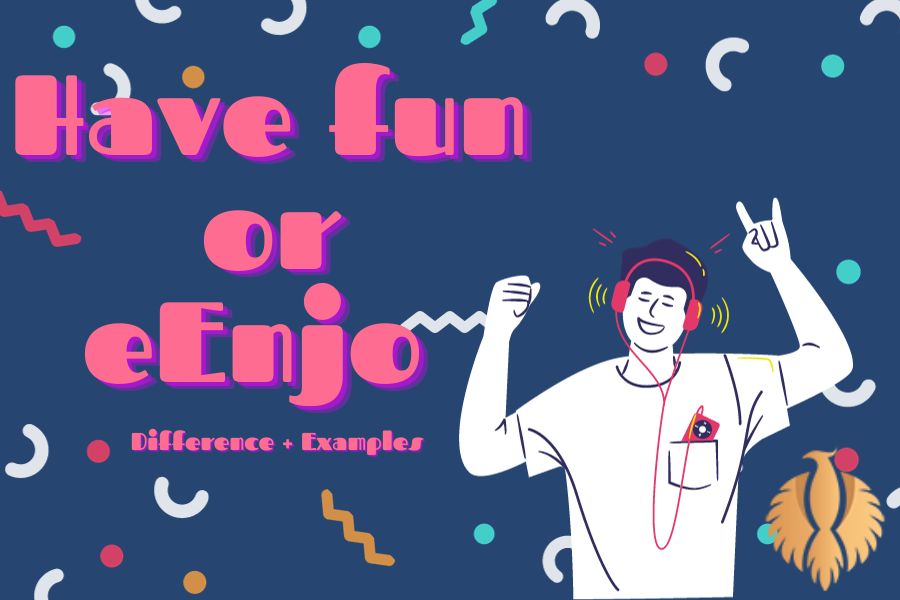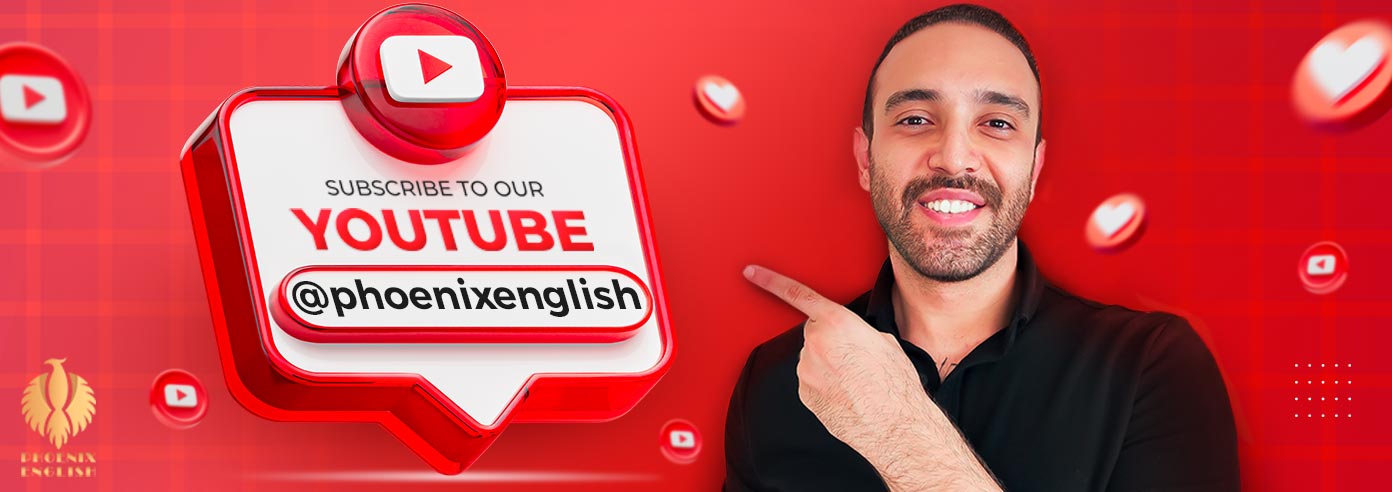Welcome to this discussion on the difference between “having fun” and “enjoying.”
In this article, we’re gonna dive into the little details that set these two expressions apart when we talk about having a good time.
We’ll look at different examples and situations to give you a solid grasp of how these terms are different and when to use them.
Whether you’re a language nerd or just curious about the finer points of language, this exploration is gonna help you understand the contrasting aspects of “having fun” and “enjoying.”
You might also enjoy: Align To or Align With: Which is Correct? [+ Examples]
Which one is correct Have fun or Enjoy?

When it comes to picking between “Have fun” and “Enjoy,” both phrases are like, super commonly used to say that you want someone to have a good time.
In my classes, I always stress that both phrases are totally right and you can totally switch them up in most situations.
It all just depends on what you personally feel like saying and the situation you’re using them in.
Both phrases are all about good vibes and telling someone to have a blast.
You might also enjoy: Interested In or On: The Differences + Examples [2023]
20 main differences of Have fun and Enjoy
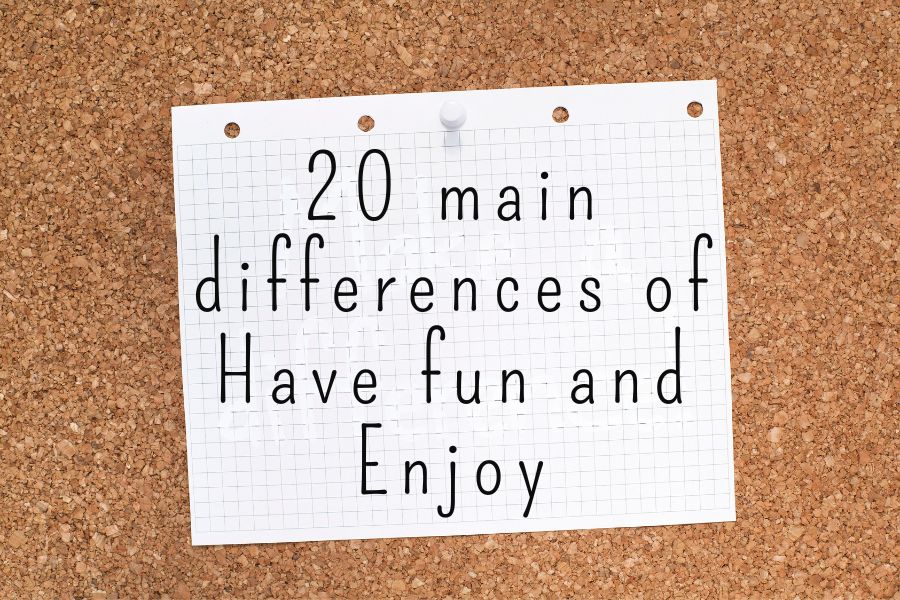
- “Have fun” is a more casual expression, while “Enjoy” is slightly more formal.
- “Have fun” is commonly used in social settings, while “Enjoy” can be used in both social and professional contexts.
- “Have fun” implies a more active and participatory experience, while “Enjoy” can refer to both active and passive experiences.
- “Have fun” is often used when engaging in recreational activities, while “Enjoy” can be used in a broader range of situations.
- “Have fun” is typically used when encouraging someone to enjoy themselves, while “Enjoy” can be used to express personal satisfaction.
- “Have fun” is often used when referring to short-term or immediate enjoyment, while “Enjoy” can refer to both short-term and long-term enjoyment.
- “Have fun” is more commonly used in spoken language, while “Enjoy” is used in both spoken and written language.
- “Have fun” is often used when referring to group activities, while “Enjoy” can be used for both individual and group experiences.
- “Have fun” is often used when referring to leisure activities, while “Enjoy” can be used in a broader range of contexts.
- “Have fun” is more commonly used in informal conversations, while “Enjoy” can be used in both informal and formal conversations.
- “Have fun” is often used when wishing someone a good time, while “Enjoy” can be used to express personal satisfaction or to encourage someone to have a good time.
- “Have fun” is often used when referring to events or occasions, while “Enjoy” can be used in a broader range of situations.
- “Have fun” is often used when referring to physical activities, while “Enjoy” can be used for both physical and non-physical experiences.
- “Have fun” is often used when referring to entertainment or recreational activities, while “Enjoy” can be used in a broader range of contexts.
- “Have fun” is often used when referring to spontaneous or unplanned enjoyment, while “Enjoy” can be used for both planned and unplanned enjoyment.
- “Have fun” is often used when referring to social gatherings or parties, while “Enjoy” can be used in a broader range of social situations.
- “Have fun” is often used when referring to experiences that involve laughter or excitement, while “Enjoy” can be used for a wider range of emotional experiences.
- “Have fun” is often used when referring to experiences that involve physical movement or action, while “Enjoy” can be used for both active and passive experiences.
- “Have fun” is often used when referring to experiences that involve trying something new or adventurous, while “Enjoy” can be used in a broader range of experiences.
- “Have fun” is often used when referring to experiences that involve enjoyment with others, while “Enjoy” can be used for both individual and shared experiences.
You might also enjoy: Copys or Copies: Differences + Examples [2023]
Exploring the Distinction: Having Fun vs Enjoying

When we talk about the difference between “having fun” and “enjoying,” it’s important to know the little things that make these two phrases different.
In my classes, I always say that “having fun” means actively doing things that bring pleasure and entertainment.
It’s about being involved and focusing on the experience itself.
On the other hand, “enjoying” is a broader feeling of satisfaction and contentment that comes from an activity or situation.
It’s about appreciating and feeling fulfilled.
In my classes, I tell my students to think of “enjoying” as a state of being where you find pleasure and happiness in the whole experience.
Both phrases are positive, but the difference is in how much you’re engaged and how satisfied you feel.
“Having fun” is more about the immediate and the present moment, while “enjoying” is about a bigger and longer-lasting kind of pleasure.
In the end, whether you choose “having fun” or “enjoying” depends on the specific situation and what you want to emphasize.
You can use both phrases in many situations, but understanding the subtle differences can help you express yourself in a more accurate and effective way.
You might also enjoy: In The Office or At The Office: 7 Key Differences [2023]
10 examples for “Have fun”:
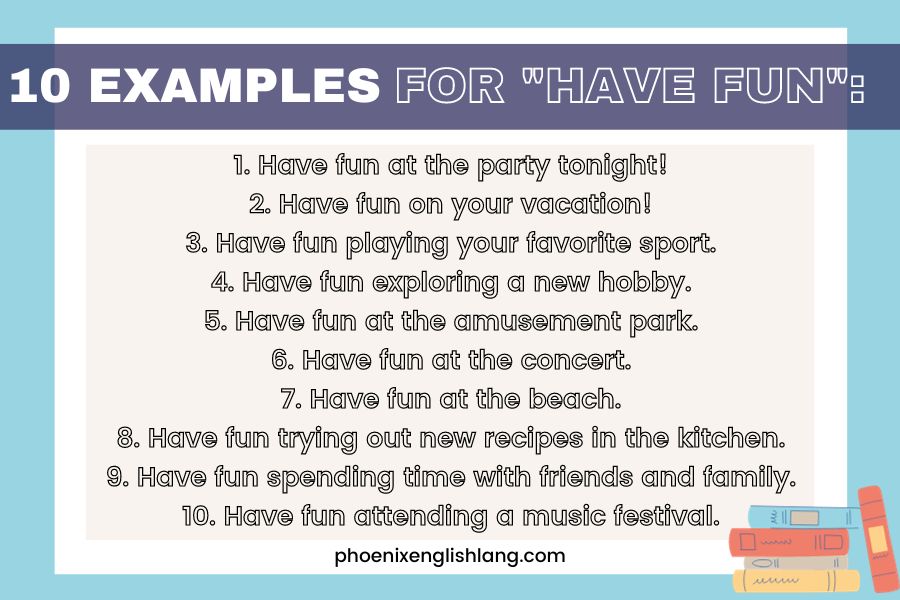
- Have fun at the party tonight!
- Have fun on your vacation!
- Have fun playing your favorite sport.
- Have fun exploring a new hobby.
- Have fun at the amusement park.
- Have fun at the concert.
- Have fun at the beach.
- Have fun trying out new recipes in the kitchen.
- Have fun spending time with friends and family.
- Have fun attending a music festival.
You might also enjoy: Trainer or Trainor: 10 Main Differences + Examples [2023]
Understanding the Difference: Fun and Enjoyment
In my classes, I often talk about the difference between “fun” and “enjoyment” to help students get what makes them different.
“Fun” means feeling amused and pleased when doing entertaining stuff.
It’s usually connected to being excited and feeling light.
On the other hand, “enjoyment” is about feeling satisfied and fulfilled.
It’s being content and appreciating the whole experience.
While both words mean positive feelings, “fun” is more about the activity itself and is more immediate, while “enjoyment” is a broader and more meaningful kind of pleasure.
Knowing this difference can help us express our experiences better and have more meaningful interactions with others.
10 examples for “Enjoy”:
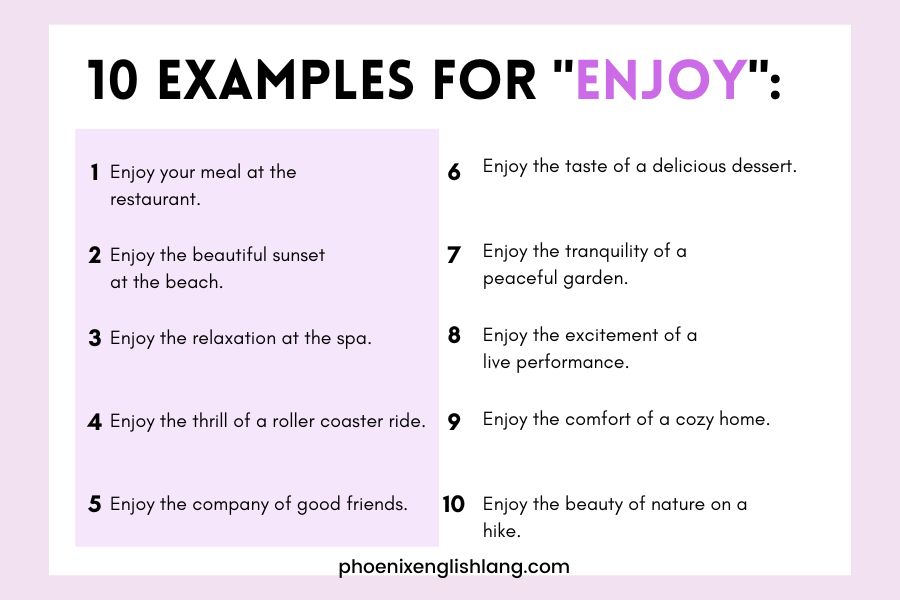
- Enjoy your meal at the restaurant.
- Enjoy the beautiful sunset at the beach.
- Enjoy the relaxation at the spa.
- Enjoy the thrill of a roller coaster ride.
- Enjoy the company of good friends.
- Enjoy the taste of a delicious dessert.
- Enjoy the tranquility of a peaceful garden.
- Enjoy the excitement of a live performance.
- Enjoy the comfort of a cozy home.
- Enjoy the beauty of nature on a hike.
You might also enjoy: Thanks God or Thank God – Fully Explained + Video
Differentiating Between Fun and Enjoyment: Examples and Insights
Differentiating between fun and enjoyment is a pretty useful skill in understanding our experiences.
In my classes, I often give examples to show the difference.
Like, playing a competitive sport can be super fun because of the excitement and adrenaline rush it gives.
But, just chilling by the beach and watching the sunset can bring a feeling of enjoyment because of its peacefulness and beauty.
Fun is usually more active and energetic, while enjoyment is all about feeling calm and content.
Knowing these little differences can help us express our feelings and preferences better in different situations.
Unveiling the Contrast: Fun versus Enjoyment with Real-life Scenarios

In my classes, I often talk about the difference between “fun” and “enjoyment” by looking at real-life situations.
“Fun” usually means having a good time and being entertained, like playing games or going to parties.
It’s just a quick burst of fun.
On the other hand, “enjoyment” is a deeper feeling of satisfaction and happiness that comes from things like reading a really good book or spending quality time with people we love.
It’s a more meaningful and long-lasting feeling.
By understanding these differences, we can explain our experiences better and show our emotions more accurately.
So, whether we’re looking for fun or trying to find enjoyment, knowing the contrast helps us appreciate the different ways we find happiness in our lives.
You might also enjoy: Boys’ or Boy’s– Which One is Correct? + Example
Conclusion:
So basically, we talked about the difference between “having fun” and “enjoying” and gave some examples to show how they are different.
Both of them mean that you feel good and satisfied, but “having fun” is more about being active and lively, like when you’re entertained or amused.
On the other hand, “enjoying” is more about feeling relaxed and content, and appreciating and being satisfied with something.
Knowing these differences helps us talk about how we feel and what we’ve experienced more accurately.
So now, whether you’re talking about an exciting adventure or a calm and peaceful moment, you can use the right expression to express your feelings correctly.

Hi, welcome to my blog! My name is Omid and I am thrilled to have you here! I am an English language teacher with 12 years of experience and hold multiple international certifications (TESOL, IELTS, TOEFL, PTE, CELTA). Additionally, I hold a PhD in Applied Linguistics with a specialization in Teaching English as a Second Language (TESL), which fuels my passion for teaching English and assisting others in mastering the language. To me, nothing is more rewarding than helping individuals enhance their English language abilities through various methods. So, let’s embark on this journey of learning English together.

